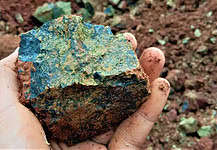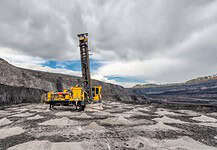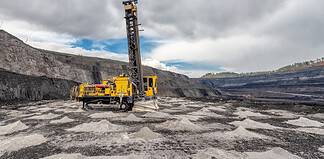LITHIUM will be the biggest player in the coming electric vehicle revolution, but the tech metal has fallen on tough times of late.
The fall in prices, like so many of Australia’s export resources, has been dictated by China, where oversupply has led to price drops large enough to counter the stable and even rising prices in other countries.
Mr Grant said over-supply has spooked the market, but also that lithium is not alone.
“Everyone is talking about oversupply of 6pc spodumene concentrate, for sure,” he said.
“This has crashed the price of some lower grade lithium chemical products, and most importantly, hurt market sentiment towards the entire industry.
“Young developers are having a hard time raising capital for their new projects, which could cause huge problems for supply of lithium for electric vehicles in the coming years.
“Similar stores are playing out in cobalt and high grade nickel products but for other reasons.”
The Australian Resources and Energy Quarterly predicts that Australian lithium production will increase from an estimated 272,266t in 2018-19 to about 335,000t in 2020-2021, citing rising production value and new refineries.
The report forecast the total export revenue to grow to $1.4b by 2021.
The present lithium oversupply can be seen as a side effect of miners’ attempts to position themselves to meet the anticipated rapid increase in demand in the near future.
“The fact that supply is being triangulated against future demand makes it somewhat unlikely that oversupply will correct in the very near future,” the report said.
“However, demand growth is likely to outstrip supply by around 2023.”
Slash, burn and impairment
US lithium giant Albemarle has announced that it would drastically scale back its Australian development plans.
The company abandoned its 75000tpa expansion at the Kemerton lithium hydroxide plant near Bunbury in southwest WA, and after it restructured a deal with MinRes at its Wodgina project in the Pilbara, it scrapped plans for a 50,000tpa lithium hydroxide processing plant.
Albemarle also owns 49pc of the Greenbushes lithium mine in southwest WA which is currently undergoing expansion.
Galaxy Resources has also had a hard time of 2019, flagging a non-cash impairment charge of $A222m-$274m, following a review of the inventory of lithium at its flagship Mount Cattin mine in WA.
The hard rock advantage
Worldwide lithium production is shifting toward the use of hard rock deposits such as spodumene ore as the lithium hydroxide produced from hard rock is more suitable for use in high-nickel products such as batteries.
Hard rock is also less reliant on water than brine, and the high volume of water required for brine production means that it has become a contentious issue in some South American regions.
These factors along with many more will likely see hard rock lithium production dominate the global growth in production, and Australia looks set to be at the centre of this production.
Mr Grant believes that spodumene will be hit the hardest, however, and that junior producers were cautious.
“They’re ‘taking it slow’ to avoid having to raise capital at unfavourable capital market capitalisations,” he said.
“This would dilute current shareholders a lot more compared to if share prices were higher.”
While prices are not expected to rise considerably, Australia’s output is.
Australia currently has no domestic use for spodumene, and falling prices will likely frustrate producers over the coming years.
On the contentious subject of the heavy rare earths war that is raging between the US and China, Mr Grant was quite confident that the EV market would not be affected, should it become a protracted siege.
“The EV boom in China is unlikely to have issues in that case, which is where a huge portion of the EV industry is located,” he said.
“But non-Chinese cathode material manufacturers might have serious issues here.”
New supply chains
With the supply chains between China, Japan and the EU markets, and China and Chile to the Korean markets, dominating the market as the two major players, Mr Grant said that new projects will open up new supply chains once the ‘lithium winter’ is over.
“Lots of new Argentine brine projects and Nevada clays are both very exciting to me,” he said.
“I think these might be major lithium producing regions, and I think there will be a number of other projects around the world servicing local supply chains too, such as European lithium projects for cathodes in Germany and Eastern Europe.”
The future of lithium post-2030 has raised concerns from analysts as EV sales are expected to plateau around the same time large-scale lithium recycling begins.
But that may be of little consequence when considering the current supply of the battery metal against the anticipated demand of the 2020s.
“We’ll need a heck of a lot more lithium out of the ground before lithium recycling becomes relevant,” Mr Grant said.
“I will be surprised if more than 80pc of it gets recycled past the 2020s, so the remaining 20pc of demand for lithium, which is much larger than what it currently is, is a much larger demand for lithium compared to today.”









































